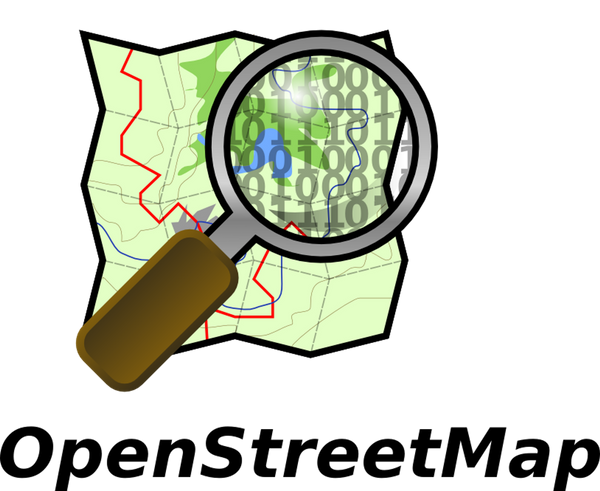
Jövő héten, 2018. május 14-én ismét lesz OpenStreeMap Meetup. Téma az urban mobility lesz, melynek keretén belül 4 angol nyelvű előadás lesz hallható.
Az OpenStreetMap több okból is remek projekt. Egyrészt készül egy a Földet ábrázoló részletes térkép, amelynek adatai mindenki számára elérhetőek. A térképek tetszőlegesen tematizálhatók (vannak autós és kerekesszékes közlekedési, túrázós, kerékpáros, menő, sőt tűzcsapos térképek). A mai napig tömörítve nagyjából 60 gigabájt adat gyűlt össze az OSM térképadatbázisában, amely minden tekintetben méltó kihívója szeretne lenni kereskedelmi térképeknek. Mind pontosságban, mind részletességben nagyon sok helyen már etalonnak vehető, ugyanakkor számos helyen kevesebb az elérhető információ.
Miképpen a Wikipediát, az OpenStreeMapet is önkéntesek szerkesztik, akik a szabadidejükből áldozva, vagy éppen munkahelyükön azon dolgoznak, hogy az OSM pontosabb és minél jobb legyen. Ha van kedvdve csatlakozzon az Open Street Map lelkes szerkesztőihez, térképezze fel, javítsa ki, tartsa karban saját környezeted az Open Street Map térképen. Ha teheti jönnön el a meetupra és talkozzon a többi szerkesztővel. Lehet szerkeszteni a weben, mobilos kliensekről (OsmAnd és Maps.me), vagy JAVA asztali kliensből is (JOSM).
Használja a mobilos klienseket (OsmAnd és Maps.me) az egyszerűen használható, offline, hangos navigációhoz!
További információ a meetupról és jelentkezés.
-
Helyszín: ingatlan.com Zrt. irodája, 1016. Budapest Mészáros u. 58/A
-
Időpont: 2018. május 14., hétfő, 17:50
Előadók, előadások
#1. Michael Szell ( Central European University | Northeastern University | Complexity Science Hub Vienna )
"Using OpenStreetMap for Quantification and Visualization of Urban Mobility Space Inequality"
abstract:
Most cities are car-centric, allocating a privileged amount of urban space to cars at the expense of sustainable mobility like cycling. Simultaneously, privately owned vehicles are vastly underused, wasting valuable opportunities for accommodating more people in a livable urban environment by occupying spacious parking areas. Since a data-driven quantification and visualization of such urban mobility space inequality is lacking, here we explore how crowdsourced data can help to advance its understanding. In particular, we describe how the open-source online platform What the Street!? (https://whatthestreet.moovellab.com/) uses massive user-generated data from OpenStreetMap for the interactive exploration of city-wide mobility spaces. Using polygon packing and graph algorithms, the platform rearranges all parking and mobility spaces of cars, rails, and bicycles of a city to be directly comparable, making mobility space inequality accessible to a broad public. This crowdsourced method confirms a prevalent imbalance between modal share and space allocation in 23 cities worldwide, typically discriminating bicycles. Analyzing the guesses of the platform’s visitors about mobility space distributions, we find that this discrimination is consistently underestimated in the public opinion. Finally, we discuss a visualized scenario in which extensive parking areas are regained through fleets of shared, autonomous vehicles. We outline how such accessible visualization platforms can facilitate urban planners and policy makers to reclaim road and parking space for pushing forward sustainable transport solutions.
Link to paper: https://www.cogitatiopress.com/urbanplanning/article/view/1209
#2. Christopher Beddow ( Solutions Engineer, Mapillary)
"Mapillary and Urban Mobility"
Abstract: Mapillary imagery provides a unique source of mobility data, and can be used to improve OpenStreetMap and other urban datasets based on human and machine extractions from images. We will consider how some organizations have made use of this, as well as how to make best use of Mapillary imagery in OpenStreetMap.
#3. Noémi SZABÓ ( urban planner, Mobilissimus )
"OSM-based pedestrian, cycling and parking maps for Eger"
abstract:
The extensive traffic calmed city centre area and the constantly expanding bicycle friendly route network in Eger makes mobility and sightseeing possible both on foot or by bike. Commissioned by the City of Eger, Mobilissimus created new maps to support more and more people in choosing sustainable transport modes.
The presentation is going to cover a short introduction of the project (the Sustainable Urban Mobility Plan of Eger and the connected communication activities), and focus on the creation of the maps using OSM and other GIS data, from filling the gaps of the OSM database till the graphic design of the maps.
http://mobilissimus.hu/en/news/new-pedestrian-cycling-and-parking-maps-eger
http://www.eger.hu/hu/varos/kozlekedes
#4. Zoltán Erdős ( Urban mobility revolutioner )
"Challenges of encoding and visualizing bicycle infrastructure in OSM"
abstract: Cycling is on the rise around the world and Hungary. OSM is a great tool to help route planning but also urban design related to bicycles. However, there are challenges to include all the different types of cycling infrastructure on OpenStreetMap. I will talk about these in my presentation.
Agenda
17:50 - 18:00 Arriving
18:00 ~ 20:30 Talks
21:00 - Afterparty in the near pub!
Location:
http://csapatunk.ingatlan.com/#kapcsolat
1016 Budapest, Mészáros u. 58/A
http://www.openstreetmap.org/node/2700453924


Hozzászólások
Nem tudtam menni most ...
Beküldte kimarite -
Értékelés:
különben is vennem kéne a telóhoz egy külső GPS-t. ;)
Kami, állítólag a prezentációk elérhetőek majd (videó nem készült), közlöd itt, ha igen?